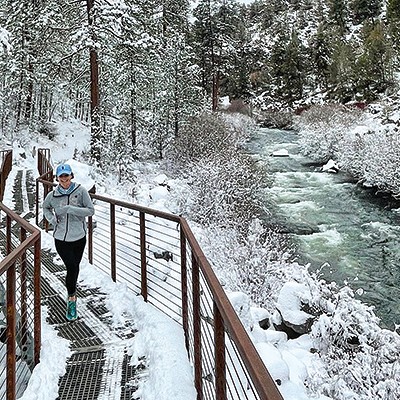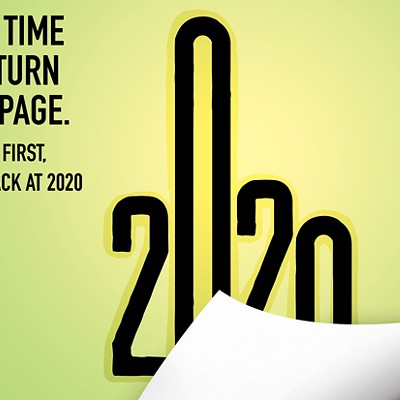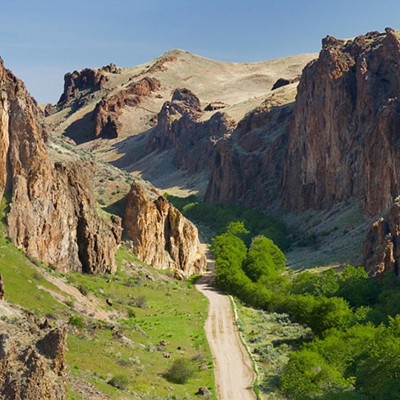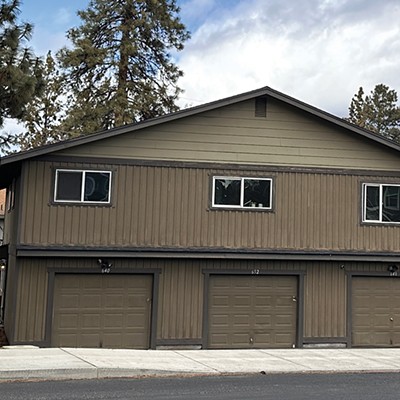So often—and by its very nature—firefighting is reactionary.
But with the Two Bulls Fire, there also has been an impressive show of some of the precautionary measures taken to manage forest fires, on several fronts.
The foremost being the prolific use of social media. As the fire spread, so did the city's public information efforts. Clearly, the city was prepared.
In addition to offering public meeting spots across town and on top of Pilot Butte, social media accounts for the fire sprung up quickly. Within hours of the first report of flames, the fire had a name and a hashtag: #TwoBullsFire. By Sunday, the fire had a Facebook page and a Twitter account. By Monday, the Facebook page had more than 9,000 acknowledgments (we won't call them "likes," that just seems weird), and the Twitter account had nearly 700 followers.
Rather than allowing speculation to fuel misinformation, officials got ahead of the story and went to the places people were already gathering to share details—the tallest spot in the city and the virtual town squares.
Yet, while we give a Glass Slipper to the city for its communication efforts, on other fronts—like the city's consideration of expanding the current Urban Growth Boundary (UGB)—it's not as wise. Specifically, this first forest fire of the season—and the closest to Bend in years—is an important consideration in the ongoing debate over the UGB.
Along with Flagstaff, Ariz., and Missoula, Mont., Bend is considered one of the cities most at risk for forest fires. Flanked by ponderosa pines to the west and a tinderbox dry climate during the summer months, it is a recipe for disaster. The 1990 Awbrey Hall Fire, for example, did reach city limits and burned 22 houses.
The Two Bulls Fire is an important reminder that the farther that Bend expands west into the ponderosa forests, the greater probability fires will reach developments. Moreover, these areas are particularly vulnerable because they only offer limited evacuation routes. Yet, the city and county continue to consider expanding the UGB to allow development in this vulnerable and potentially dangerous turf. Last July, for example, the city was considering a middle school past the current UGB, just past Shevlin Commons, in an area that would be precariously close to the Two Bulls Fire.
But we are giving out compliments, not complaints in this column, and those accolades go to Paul Dewey with Central Oregon Land Watch for his steadfast work to maintain the UGB. Last summer, for example, Dewey pointed out that the city's consideration for the proposed middle school was in a zone particularly at risk for fire. Although some officials and developers grumbled that these were scare tactics by conservationists, the prediction has proven to be a very real possibility.
Likewise, Brooks Resources is reportedly trying to drop in 50 homes in the same zone, just past the UGB. Apparently, it is planning to file paperwork with the county for an exception, according to Dewey. "There is no need to push the envelope to make as much money as you can when people's lives are at risk," he added. Dewey is concerned that this proposed housing development, if allowed, may also be the first domino to fall; a development of an additional 1000 homes are also apparently in the works for the land just west of the UGB. This would require the city expanding the current UGB—something it tried to do in 2010, and is once again considering. In the past few decades, that land has quietly been rezoned to rural-residential, a category which raises its priority and accessibility to be developed.
"This is not a new issue, yet the city and county keep trying to push development out to the west," Dewey points out.
Hats off to Dewey and Central Oregon Land Watch for holding the line on the UGB on Bend's western stretches. We would much rather that this line be held by the UGB, than by forest firefighters.
























